View of a PDF of this report.
Introduction
The upheavals caused by the COVID-19 pandemic, the war in Ukraine and increasing incidents of droughts and flooding continue to create challenges for food supplies and local economies around the globe. There is growing recognition of the need to plan for possible disruptions in the future, whether they are from political, climate or other sadly predictable shocks. Unfortunately, all too often these plans focus narrowly on outdated Green Revolution approaches to food security based on increasing the sheer volume of production of a limited set of foodgrains. These approaches ignore the ways reliance on overly simplistic solutions lock farmers and consumers into patterns of production and consumption that decrease biodiversity, increase greenhouse gas emissions and enshrine corporate control over our food system.
Platforms advancing yield-intensive solutions are popping up around the world in the growing number of forums that are linking climate and agriculture. One of the largest in scope and scale is the Agriculture Innovation Mission for Climate (AIM for Climate or A4C), led by the United States and the United Arab Emirates. It includes more than 40 countries and 100 private sector agencies and non-profit organizations. Its members include global meat companies and agriculture interests that have long opposed climate action. There are few environmental or farmer-led organizations.
AIM for Climate is the latest iteration of a long string of proposals around so-called climate-smart agriculture. That positive sounding but vague term includes practices such as genetically engineered seeds and the use of satellites and artificial intelligence to ensure precise (and less wasteful) use of synthetic fertilizers and pesticides. The benefits are real: The technologies are carefully designed to limit greenhouse gas (GHG) emissions and/or to meet specific climate goals, such as sequestering carbon in the soil. Their limitations, however, are just as real: Focused on the “tree” of GHG emissions, the technologies miss the “forest” of ecosystem and rural community wellbeing, and the opportunity to combine climate ambition with ambitions for biodiversity, clean water and healthy soils. Many of the climate-smart technologies lock in dependence on corporate-controlled, expensive and relatively rigid technology packages that block the possibility of locally adapted uses of the technology that use local knowledge and expertise.
Climate-smart agriculture often includes nods to agroecological practices and organic agriculture, but only as just another “tool in the toolbox.” Agroecology, however, is more — much more.
Agroecology uses a broader definition of science, which includes mutual learning between scientists and farmers, builds soil health, and increases crop, seed and related biodiversity and production. The focus is on food production per acre, rather than yield per crop. Agroecology has emerged as a set of practices based on principles that guide how to produce food sustainably, as well as how to manage the social and economic relations that govern food production, processing, exchange and waste management in a fair manner. As a science, agroecology involves study of the ecology of the entire food system and the application of ecological concepts and principles to the design and management of sustainable food systems. It aims to create beneficial biological interactions and synergies among the components of agroecosystems and minimize synthetic and toxic external inputs, as well as waste production. And, importantly, agroecology is integrally linked to social movements that seek to transform agriculture to build locally relevant, resilient and sustainable food systems that strengthen the economic viability of rural areas based on short marketing chains, equity, and both fair and safe food production.
Over the past year, IATP has invited allies from the Global South and North to share their experiences with agroecology in a series of case studies. They demonstrate innovative approaches that enhance the food system, grounded in food sovereignty. In this paper we offer excerpts from those case studies that highlight the importance of integrated solutions. They illustrate five dimensions of agroecology and its practice:
- The central role of a continual dialogue of knowledge among farmers and scientists
- Community resilience in the face of crises
- Reducing the use of petrochemical inputs
- Rebuilding ecosystems and healthy living soils
- Public policies to support a transition to agroecology
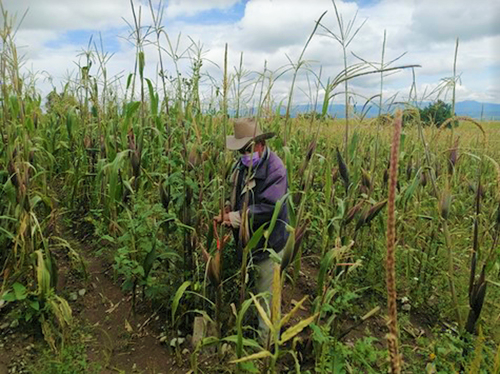
The dialogue of knowledge among farmers and scientists
There is a rich history of the ways agroecology has evolved as a science, a practice and a movement. Agroecology researcher and expert, Michel Pimbert, notes that one of the key shifts differentiating agroecology from more technology-driven approaches like climate-smart agriculture is that it consciously seeks to “combine the experiential knowledge of farmers and indigenous peoples with the latest insights from the science of ecology.” This is not just a matter of better data but a fundamental shift in how scientists and farmers understand their respective roles, emphasizing the importance of learning from each other in ways that stimulate further innovations based on mutual respect. Members of the Interdisciplinary Research and Socio-environmental Studies Group in Mexico offered these reflections in the case study Food sovereignty: A social construction from the field:
Gilberto Juárez Flores, an agronomist, is the technician responsible for two programs: technical support for agricultural production and the Ministry of Labor’s "Youth Building the Future" program. That program seeks to train young people in the knowledge of the countryside, with the idea of forming new farmers with a different vision, far from the agricultural practices of the Green Revolution. The technician’s work is fundamental to the agroecological transition. The approach is not limited to the introduction of new productive practices; it also has an impact on the formation of new social relations that abandon the conventional approach to agriculture. This activity is central to shaping the identity of agroecological farmers and is based on a horizontal relationship between so-called scientific knowledge and traditional knowledge.
The changes in the production process show that farmers’ dependency, as generated by the Green Revolution, is beginning to be replaced by a self-managed process that is based on ongoing dialogues. In situ, the farmer discusses his problems with the technician, who consults, reviews bibliographic material and reflects on his or her own experience. These are moments of mutual learning between the farmer and the technical advisor. It is not the kind of top-down "scientific" directives that come from the big agribusiness companies; it is the renewal of peasant knowledge that interacts with the technicians trained in agroecology. Thus, a new way of farmer and technician interaction emerges in which they guide each other in their walks through the fields. They are part of a transformation in the countryside, as together they are both professionals responsible for collaborating in the construction of food sovereignty from the field, a mission that goes beyond providing food to the population, to ensure that it is healthy and free of agrochemicals that damage the land and the human body.
Eliminating farmers' dependence on agrochemicals is one of the strategic aspects of food self-sufficiency. According to Gilberto, the technician in Ixtenco, “the idea of the program is to try to break this dependence on chemical inputs, so that they can make their own inputs and have them ready when they need them, at the right time for the crop...” The preparation of composts and foliage empowers the farmer to control the productive process. Overall, this involved a learning process carried out together with the technician, it is a new relationship of knowledge generation that fills some of the gaps in higher education institutions and research centers. Achieving food sovereignty is a strategic policy that requires the horizontal integration of peasant knowledge, scientific knowledge and government action. This new farmer-technician partnership that should have an impact not only on food production processes, but also on the transformation of the country's food supply chains, which are linked to the creation of a domestic market capable of meeting the country's food needs.
These dialogues can transcend improved crop techniques to strengthen human rights. In India, Sheelu of the Tamil Nadu Women’s Collective reflected on the role of agroecology in their journey to empowerment:
When the Women’s Collective started, we organized women based on the issues of their rights, particularly the issues of domestic violence which each and every woman understood very clearly as most of them had been through this in their lifetime. They got organized and empowered and began concentrating on their livelihood options which was affecting their family health very badly. We have also been working with children’s groups for a long time, developing their understanding of issues around gender, caste and environmental concerns. As the next step we formed youth groups, which paved the way for village level Gender Equity Vigilance Committees (GEVC). Unlike the village level women empowerment committees (WEC) of the Women's Collectives, GEVC members are young men and women of the village who are under 40, either studying or working outside the village. With GEVC, the focus is on creating awareness to prevent issues of violence against women and children. These youngsters from farming families, who are food secure, now also address community issues, showing solidarity with broader social and environmental concerns. We do see that their ecological practices not only ensure food security at the household level, but also contribute to the climate-resilient community, which is an answer to today's global problem of climate change. Most of the women farmers have become climate warriors in practice. It further empowers them as leaders in the community. Our focus is on “HEALTHY COMMUNITIES” that are not only physically healthy but also mentally sound; in brief communities that are immune to disease and violence.
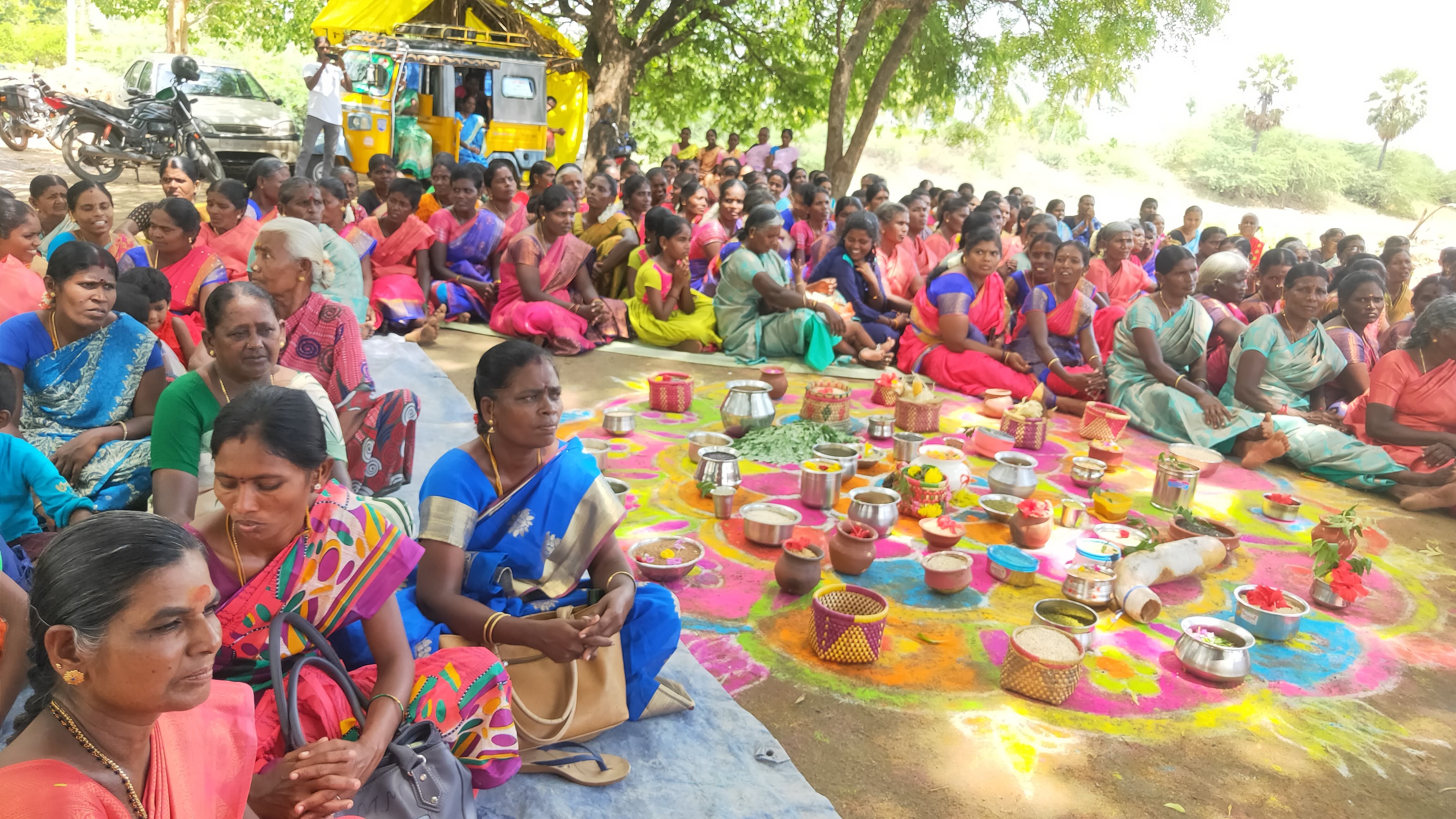
Community resilience in the face of crises
Agroecological approaches are grounded in biodiversity, which can bring important environmental benefits along with reducing the risks of overreliance on production or imports of a few crops. It also offers tools that strengthen communities. Biowatch South Africa describes the impacts of recent crises and their approach in KwaZulu-Natal:
In the past two years, the world has been reeling from the impact of the COVID-19 pandemic. South Africa entered a sudden-onset hard lockdown as part of a nationwide State of Disaster in response to the pandemic on March 26, 2020. The lockdown restricted movement, allowing for access to supermarkets for essential food and cleaning supplies one family member at a time. Public transport was curtailed, and informal trading was disallowed. In many places conditions were maintained through harsh policing and army presence, leaving people fearful of even working in their household fields. Workers could return to work from June 1, 2020, and the lockdown was adjusted incrementally with the rise and fall of infections until the lifting of the State of Disaster on April 5, 2022.
Many have grieved the loss of loved ones, but the lingering impact has also been the loss of livelihoods due to stringent lockdowns and the ensuing global economic crisis and deepening hunger in a society already marred by food insecurity. By March 2021, 35% of households in South Africa could not purchase adequate food and 17% of households experienced consistent hunger. In 2022 the war in Ukraine has led to skyrocketing prices for essential food items such as cooking oil as well as fuel, which has a knock-on impact on food security. This year, 65% of the population (38.7 million people) cannot afford a healthy diet.
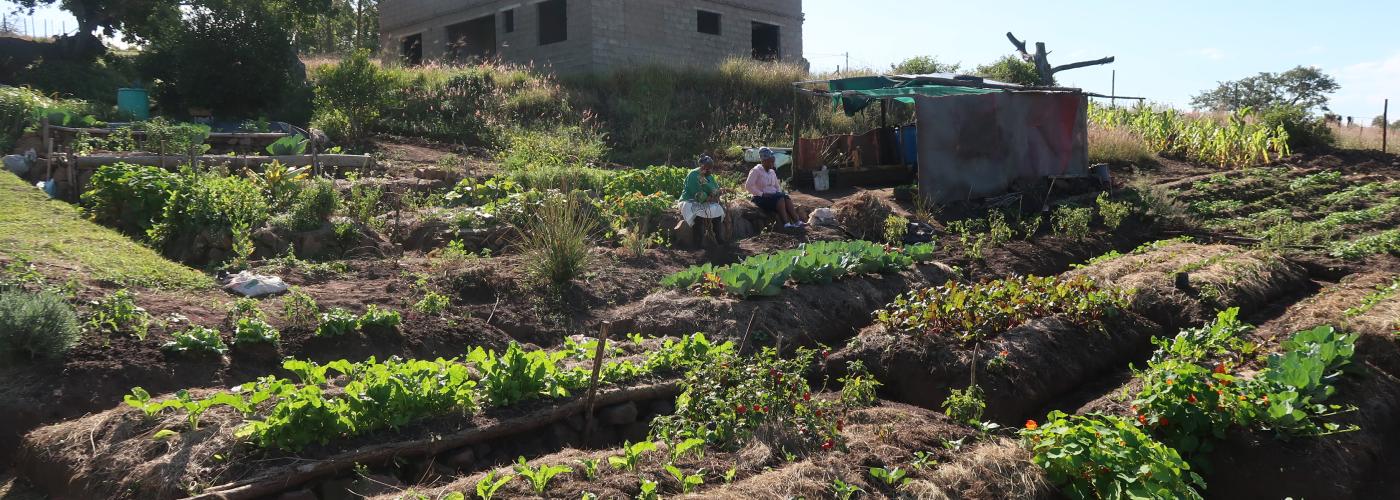
Biowatch began working with smallholder farmers in the KwaZulu-Natal region in 2003, utilizing agroecological approaches. In 2022, they commissioned an independent survey of 22 of those farmers. In general, they found that these approaches reduced dependence on external agrichemical inputs and enabled farmers to rebound more quickly from crises.
First of all, as they were not dependent on external agrichemical inputs, the lockdown-related breakdown in supply chains did not impact their agricultural operations or outputs as much as farms using conventional agriculture. Since they use a diversity of crops, and because there is so much genetic diversity within seeds, these agroecological farmers were better able to adapt to climatic variations, or even lockdown-related restrictions; such diversity of fresh and nutritious food also helped contribute to keeping families healthy.
The deep agroecological knowledge and skills these farmers carry within them they feel have enabled a quick rebound after adverse conditions and flexibility to take on new opportunities. This includes their ingenuity in earning additional income from produce by developing markets for their surplus despite the lack of support for local markets from government.
But at the same time, they appreciated their ability to share surplus with other, more vulnerable people in the community. The spiritual solace many farmers find in their agroecological practice and its resonance with their ancestral and cultural roots, combined with the fact that they were able to ensure their own food security and also of extended family (who returned home as a result of lockdown), stood out as one of the most important benefits of agroecology during these lockdowns.
Agroecological approaches go beyond increasing production to also bring products to market in ways that benefit local communities. In the U.S., IATP works closely with the Hmong American Farmers Association (HAFA) on Farm to School and Farm to Early Care programs in Minnesota.
Farm to Early Care represents one concrete way to support implementation of agroecological principles locally. Farm to Early Care ties directly to the agroecological principles of promoting a circular economy, working to connect producers and consumers, and supporting local producers.
HAFA and IATP have worked together since 2014, when we piloted the first Farm to Head Start program in Minnesota, partnering with Community Action Head Start in St. Paul. This initiative included serving meals at Head Start programs with a wide variety produce grown locally and sustainably by HAFA, including culturally reflective veggies that can be harder to source. The model also developed a new curriculum to teach kids about the food they were eating and organized field trips for kids, families and Head Start staff to HAFA’s farm. More recently, to support home-based providers, HAFA and IATP launched a Farm to In-Home Early Care initiative on the east side of St. Paul in 2019. Though impacted by the sudden upheaval brought on by the COVID-19 pandemic, the initiative is connecting a cohort of Hmong early care providers and the children they care for with fresh healthy vegetables from HAFA’s farm, in the form of weekly Community Supported Agriculture (CSA) boxes. These boxes of culturally relevant foods can help to enrich connections among and within communities. Together with IATP, this program provides resources to support providers’ long-term ability to maintain their Farm to Early Care activities and lay the groundwork of a scalable model that continues to grow.

Reductions in petrochemical inputs
Green Revolution approaches often require heavy use of chemical inputs, especially fertilizers. Large scale production of crops for food, feed and biofuels has become increasingly dependent on the use of synthetic fertilizers that also generate significant emissions. Nitrous oxide emissions (a persistent GHG with 273 times more global warming potential than CO2) linked to nitrogen fertilizer use is responsible for 21.5% of global agriculture emissions, and that number is rising. The production process (which utilizes natural gas and electricity) accounts for 35% of nitrogen fertilizer emissions, field use is linked to 62.4% and transportation the rest. The Intergovernmental Panel on Climate Change (IPCC) Land Report noted that the use of nitrogen fertilizer had increased globally 800% since the 1960s.
The sudden spike in fertilizer prices in the wake of Russia’s invasion of Ukraine disrupted production in many parts of the world. AIM for Climate, the U.S. Department of Agriculture, AGRA and other proponents of climate smart agriculture have called for technologies to better target fertilizer use. These measures are intended to reduce the extensive overapplication of fertilizers and other agrichemicals, but agroecological alternatives make it possible for farmers to go further by cutting dependence on external inputs more deeply. Thus, farmers can reduce high input costs, lower emissions, and strengthen the local and community economy. The Mexican government, building on decades of experience around the country, supports biofactories to generate organic fertilizers. The program is part of the Sembrando Vida (Seeding Life) program, which also focuses on agroforestry. Mexican researcher Marcos Cortez Bacilio describes this approach:
In a biofactory, different propagation techniques come together as a real and novel alternative to solve major problems inherited from industrial agriculture. Biofactories use technical-scientific advances, inspired by commonly used peasant biotechnology, to promote the development of appropriate technologies that ensure the conservation of biodiversity. For example, mountain microbes and bocashi, both of Japanese origin, are an unlimited source of minerals and microorganisms to revive soils and thus achieve balanced soil nutrition, in addition to supporting the rapid recovery of erosion caused by toxic substances and poor agricultural practices.
Biofactories can be defined as establishments that practice organic or ecological agriculture, using materials available in the community — sometimes so-called wastes or residues such as manure, weeds, grasses, ashes, whey, stubble, bush leaves, nejayote, allelopathic plants and an extensive repertoire of local raw materials — to transform them and produce organic substances, leading to the production of clean products to be applied to soils and various crops.
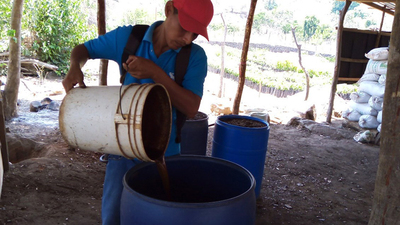
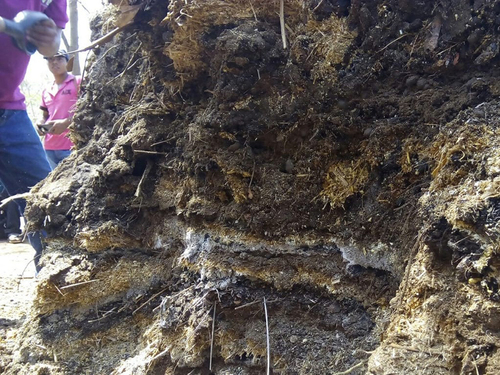
Replacing chemical inputs is an important first step, but agroecological approaches are also constantly evolving based on local, and even site-specific, experience.
The first biofactories in the state of Guerrero were established as part of the Sembrando Vida program in mid-2020 in selected communities and ejidos, starting with an average of 1,600 modules and the conversion of 50,000 hectares. Today, the goals are more ambitious — to reach more than 20,000 direct beneficiaries and, therefore, to exceed the number of trees and hectares to be established in subsequent years. The biofactories component can spark this goal if we start from the vision of improving and recovering soils and generating a symbiosis between timber trees, fruit trees and cornfields. But if the program only focuses the number of trees to be established and not the bio-farming of bio-inputs needed for their maintenance, follow-up and consolidation, this strategy could become another expensive failed reforestation project like those promoted by previous government agencies.
We know that these programs contribute to generating jobs and encouraging food self-sufficiency, improving participating families’ incomes and regaining forest cover. These achievements are not up for debate. The problem is that Sembrando Vida’s biofactories do not yet have adequate infrastructure. There are no clear production goals per beneficiary or planter, much less per biofactory. So, there is no work plan to produce kilos or tons of organic fertilizers, liters of biofertilizers, mineral broths, among other possible and easily accessible biotechnologies. Likewise, most of the personnel providing productive technical services have limited training and experience in agroecology, a situation that generates uncertainty among the members of the Campesino Learning Communities (CACs), committees established under the Sembrando Vida program, during the support process.
Rebuilding ecosystems and healthy soils with local communities
Food crises, and community responses to them, are not just taking place in the moment. Cantave Jean-Baptiste, Director of Partenariat pour le Développement Local (PDL) in Haiti and Steve Brescia, Executive Director of Groundswell International, describe how that history continues to shape the current situation:
Haiti’s challenges of course have deep roots. A brutal history of plantation slavery and colonialism installed an extractive agricultural, environmental, and economic model, which continues to shape the country today… Just as Haitian slaves and their descendants have been brutally exploited for 500 years, so too has their environment been stripped. Their once lush forests and mountain sides have been gradually turned into barren slopes. As the living soil has eroded down to the coasts and out to sea over many decades, smallholder farmers who depend on that soil have migrated with it.
Is there any hope for changing this bleak trajectory? We believe the answer is yes. An essential step is replacing the extractive agricultural and economic model with one that regenerates rural communities and landscapes and promotes food sovereignty. The greatest resources available to achieve that are Haiti’s tenacious rural population and its land. While such a transition is not a short-term fix to reestablish the rule of law, it is necessary to build the foundation for a healthier society and democracy.
PDL and Groundswell commissioned an external evaluation of their approach in Haiti.
“Agroecological farming in Haiti: A poverty crisis solution,” documents a recently completed external evaluation by the agencies Altus Impact, based in Switzerland, and the Economics of Land Degradation (ELD) Initiative, based in Bonn, Germany. Applying an environmental economics lens, the evaluation compared the "land use budgets" (the value of all production, less all inputs and costs) of agroecological versus conventional farmers. Evaluators surveyed over 330 smallholder farming households, sampled from three communal sections in northern Haiti.
They were assessing an agroecological approach that our organizations have been collaborating to support since 2009, working with 14 peasant associations in the northern part of Haiti’s Central Plateau, with about 9,900 farmers adopting agroecological practices, improving the lives of over 35,000 people. The program strengthens the agency of organized farmers’ groups, who experiment with natural farming solutions instead of using chemical fertilizers, pesticides and herbicides; conserve and improve soil fertility; diversify farm plots; and manage common goods together such as savings and credit, seed banks and grain reserves. Peasant associations coordinate successful agroecological farmers to spread effective practices to others through the power of their example and farmer-to-farmer teaching, and provide complementary supports, creating a system of farmer-centered agricultural innovation and extension where little state support exists.
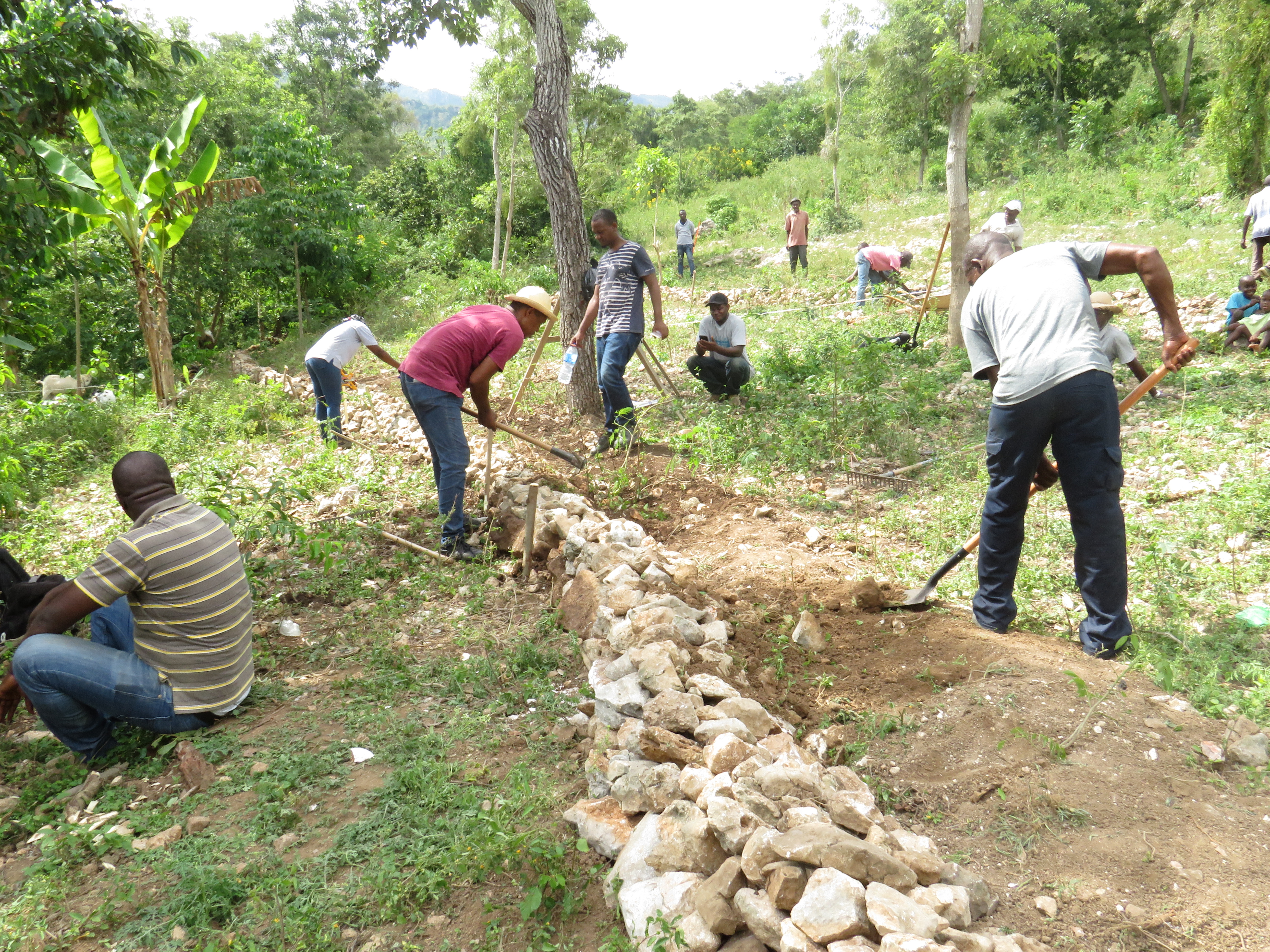
Community ties are essential to build public support for the policies needed for an agroecological transition. In an example from a wholly different context than Haiti, the German Free Bakers association explains their role in the local food chain and the need for institutional infrastructure as part of the agroecological transformation. Anke Kähler, master baker and board member of the Free Bakers, explains:
We believe that rural and urban crafts can only survive if our businesses become a place of encounters and learning, where people discover what is really important for their life and future. It is not enough to bake and sell delicious bread. Healthy, living soils are important, which is why we organized the Soil Bread (Boden-Brot) campaign to give people an idea of how important it is to preserve and nurture the fertility of our soils.
In a way, we sensitize our customers every day to the personal and political environment in which we work and they live, so that they also carry our movement further. When it comes to the prices of artisan baked goods, which are usually higher than those of industrial products, they choose to support us and get quality products and good ideas in return.

Public policies to support a transition to agroecology
Agroecology is the practices carried out on the ground, based on science. It is also inextricably linked to social movements and food sovereignty: people’s right to democratically determine the food system that works best in their context. Practices that are successful on the ground need an enabling policy environment based on broad public input. The Mexican government’s program to transition to agroecology and self-sufficiency in food supplies did not emerge in a vacuum. It was the result of decades of mobilization and advocacy by social movements. Enrique Perez describes the history of the movement to protect the nation’s corn and build food sovereignty:
The National Without Corn There is No Country Campaign brings together more than 300 peasant, environmental, human rights, consumer, academic and academic organizations. It has organized countless actions and activities, including public corn plantings, concerts, talks, and mobilizations. This year, it promoted National Corn Day, which is celebrated every September 29 to encourage the Collective Corn Demand. Working with other coalitions it contributed to "the revaluation of peasant agriculture, the protection and promotion of our corn from the field and against GMO corn and for food sovereignty.” The groups pointed out that “it is evident that there is a confrontation between two visions about the direction that Mexico's food policy should take: a backwards one that in practice is defending the interests of the agribusiness elite united with those of the transnationals that control seeds (hybrid and transgenic) and pesticides; and a different progressive vision that seeks to consolidate the advances achieved in the transformation of the food system during the government and to deepen those changes, to guarantee the rights to healthy food, to consume food produced in the country without transgenic corn, and to reduce the use of highly hazardous pesticides that can cause irreversible damage to health and the environment.” Indeed, this is what is currently happening in Mexico. There is a dispute between two visions of the country, in general and specifically about what agriculture, what countryside and what food Mexico requires, whether to continue under a failed model (green revolution, agroindustrial and neoliberal) or to build a new agrifood, nutritional and agroecological system with peasants and Indigenous people….
It is important to point out that the actions that have been promoted by the Mexican government and the legislature to lay the foundations for a new agricultural policy have been partly due to the political will and commitment of the Fourth Transformation (AMLO’s comprehensive program of reforms) but are undoubtedly based on the struggles of the peasant, indigenous, environmental, human rights, consumer and academic movements. Those coalitions have been essential in the construction of a new agrifood, nutritional and agroecological system. This dialogue, initiative and mobilization must not stop. On the contrary, it should be deepened and expanded.
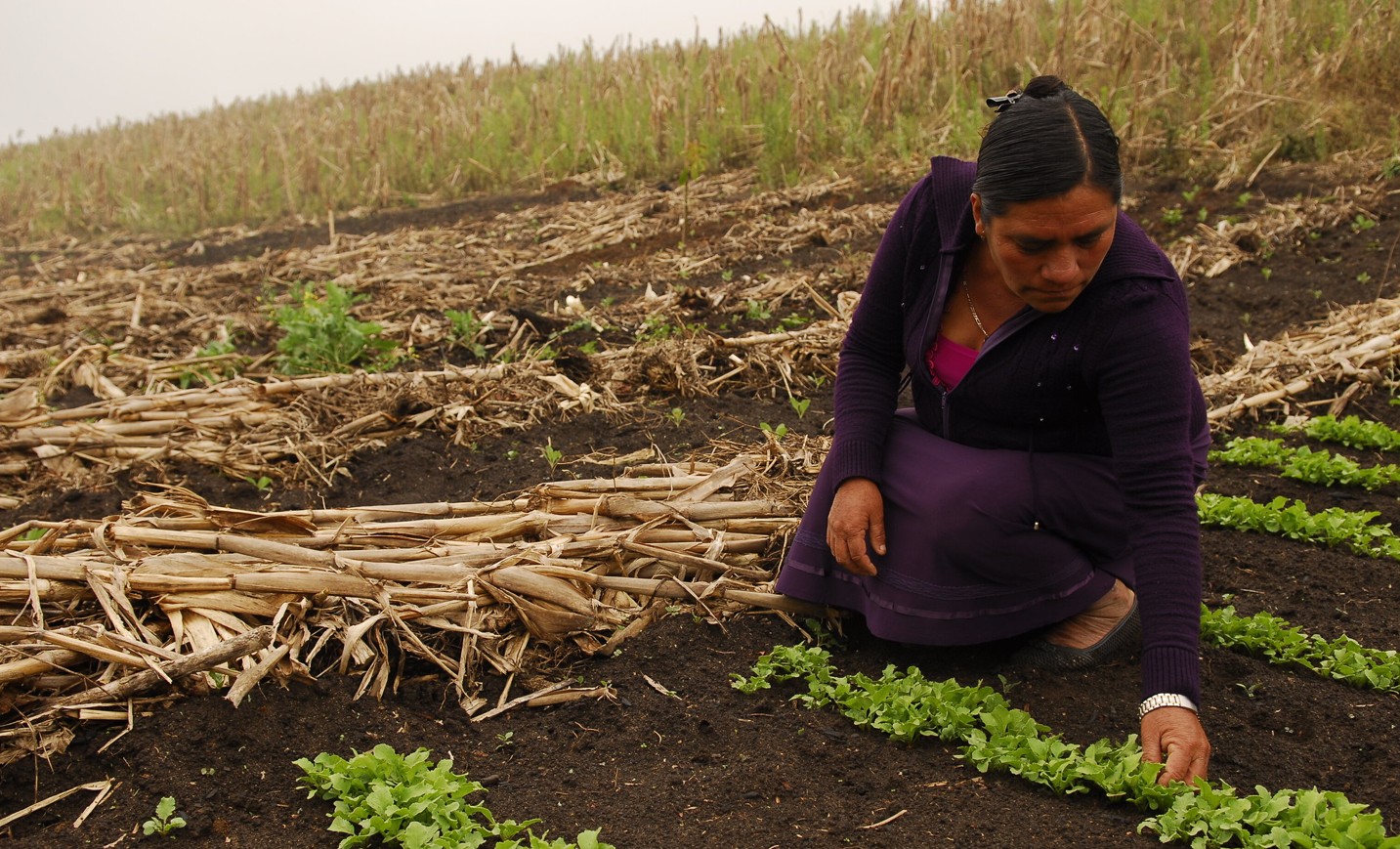
In each of the examples cited above, the communities advancing agroecology also point to the need for better public policies. Sheelu of the Tamil Nadu Women’s Collective points to the need for better public policies in India on millet cultivation, procurement, storage and distribution. Cantave Jean-Baptiste and Steve Brescia point to the need for a shift in USAID food security programs. In a review of public support for agroecology, Julie Kim from the Global Policy Forum observes:
While many practices considered as agroecological approaches have been included in various policies and projects, funding that allows agroecology to take root in national agriculture strategies has fallen short. Research by the Catholic development network CIDSE, with support from Coventry University, found that between 2016 and 2018, none of the European funding channeled through the Food and Agriculture Organization (FAO), International Fund for Agricultural Development (IFAD) and World Food Programme (WFP) went to projects that supported transformative agroecology….
Agroecology offers a holistic path towards synergistically achieving targets set by UNFCCC, U.N. Convention on Biological Diversity, the 2030 Agenda and the SDGs. Yet, agroecology faces opposition from supporters of farming methods that bring quick turnarounds in terms of returns on investment but continue to have negative, social, economic or ecological externalities. Its cross-sectoral nature demands an integrated response that is challenging in the current fragmented and hierarchical approach to policy making. The overriding priority of the upcoming 2023 high-level midterm review of the 2030 Agenda for Sustainable Development is to recapture transformative aspirations with concrete, funded and accountable policies and programs. Agroecology should be at the center of that process.
The technology-driven approaches promoted by various governments and initiatives including AIM for Climate, among others, appear to be modern but are in many ways out of date. All too often, they focus narrowly on yields while ignoring biodiversity, soil health and the deep knowledge of the people feeding their communities and their nations. Agroecology is neither a retreat to traditional agriculture nor a simple tool, one of many interchangeable tools in the climate-smart “toolbox.” It is the construction of a new approach that takes the whole ecosystem into account, including the human beings interacting with their environments, economies and social structures. It is the basis for a wholesale just and green transition for our food systems, offering a new basis for local, national and international policies for a brighter future for all.
Download a PDF of this report.
Read the full Agroecology in Movement article series.
All photos used under Creative Commons license or with creator’s permission.
Captions and credits in order of appearance:
1. Woman AE farmer in Haiti. Photo Credit: Ben Depp
2. Mexican technician in corn field. PC: Luis Llanos Hernández
3. Tamil Nadu Women’s Collective. PC: TNWC.
4. Sthandiwe and Wilson Dlamini, Maphumulo. The Dlamini’s household vegetable garden positioned below the house they are
building to catch the run-off water flowing down the slope. The beds are a variety of ‘fertility beds’ along contour which are
designed to enrich the soil and hold water. These are also well-mulched to protect the soil and hold moisture. PC: Biowatch
South Africa
5. Children in in-home early care unpack a HAFA CSA box. PC: Erin McKee
6. Processing of biols for optimal crop development, PC: Marcos Cortez Bacilio
7. Profiles of layers of organic brocashi compost during its elaboration in Semabrando Vida’s factories in Guerrero. PC: Marcos
Cortez Bacilio
8. Farmers building soil conservation barriers, Haiti. PC: Groundswell International
9. “Bread time” in Markthalle Neun, Berlin. PC: Die Freien Bäcker e.V.
10. Mexican rural woman, Esther. PC: Oxfam